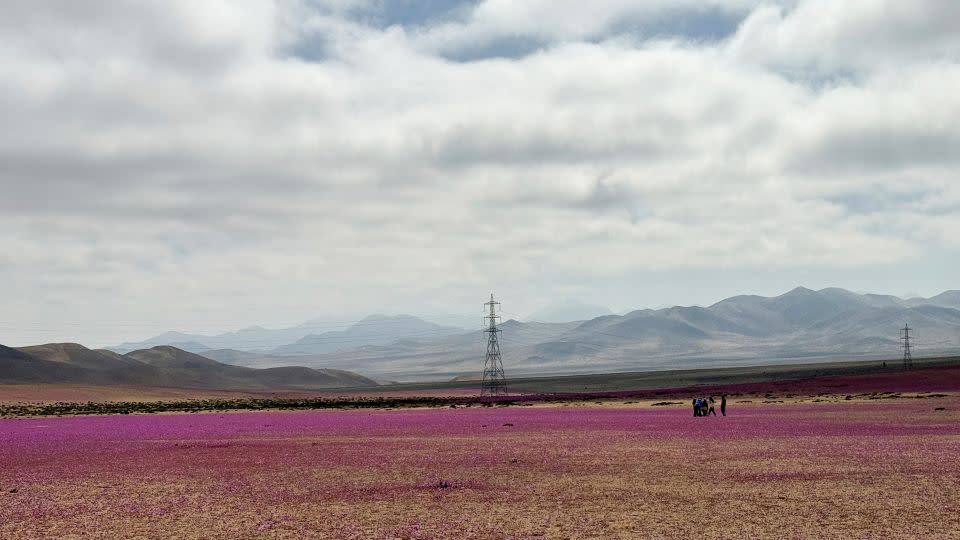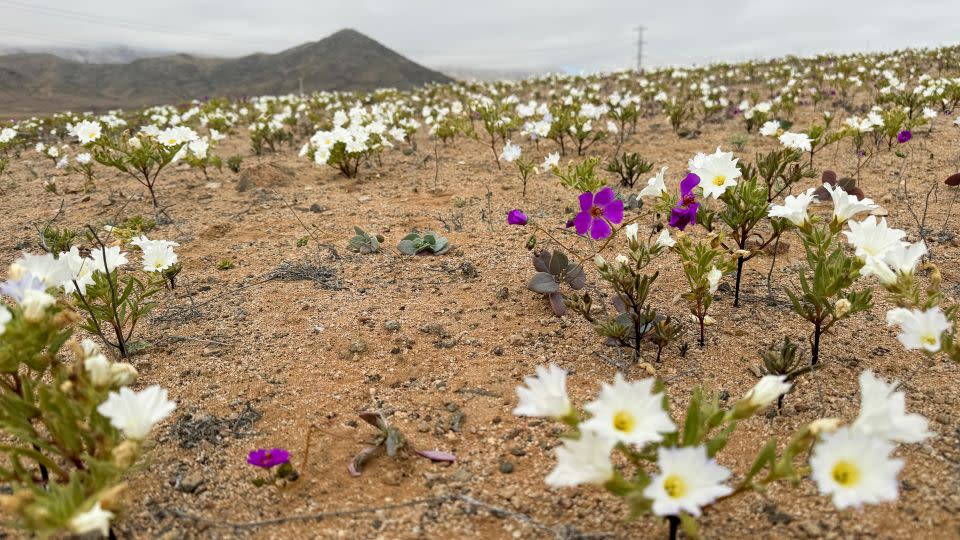The driest desert on the planet is in bloom
The Atacama Desert in northern Chile is one of the driest places on Earth, but swaths of its usually barren sand are currently carpeted with a colorful bloom of white and purple flowers.
The Atacama Desert is known as the Disierto Florida (the “flowering desert”) because every few years it’s blanketed with flowers, when the right levels of rainfall and temperature coincide to awaken dormant desert seeds.
This usually happens in the spring. But the current bloom is unusually early — in the middle of the Southern Hemisphere’s winter — thanks to rainfall fueled by El Niño, a natural climate phenomenon that influences global weather.
The bloom usually coincides with El Niño, during which temperatures are warmer in the region, leading to more evaporation and, in turn, more rainfall.
Over the past 40 years, around 15 blooming events have happened, according to a 2022 analysis from the Pontifical Catholic University of Chile.


The blooms are not yet extensive enough to officially be considered part of the “flowering desert,” Cesar Pizarro, who heads biodiversity conservation for the National Forestry Corporation (CONAF), an organization run by the Chilean government, told Reuters.
But more rain is expected, meaning the flowers could spread over a larger area, he added.
In 2022, the Chilean government announced the creation of a new national park in the Atacama desert, in an effort to protect these rare blooms along with the wildlife — including insects, reptiles and birds — they help support.
For more CNN news and newsletters create an account at CNN.com


